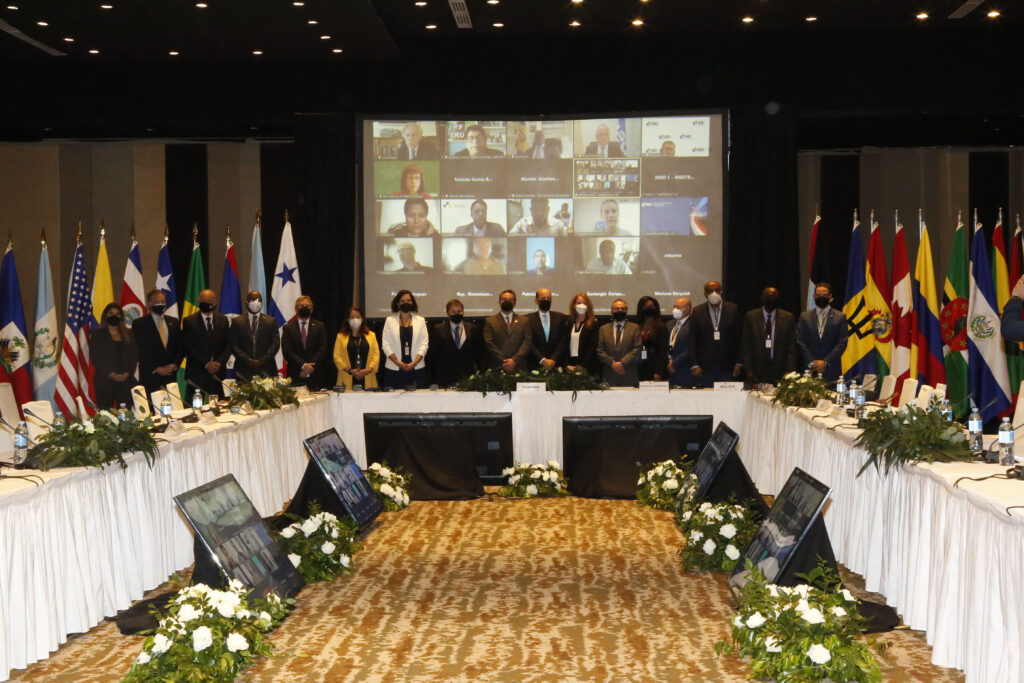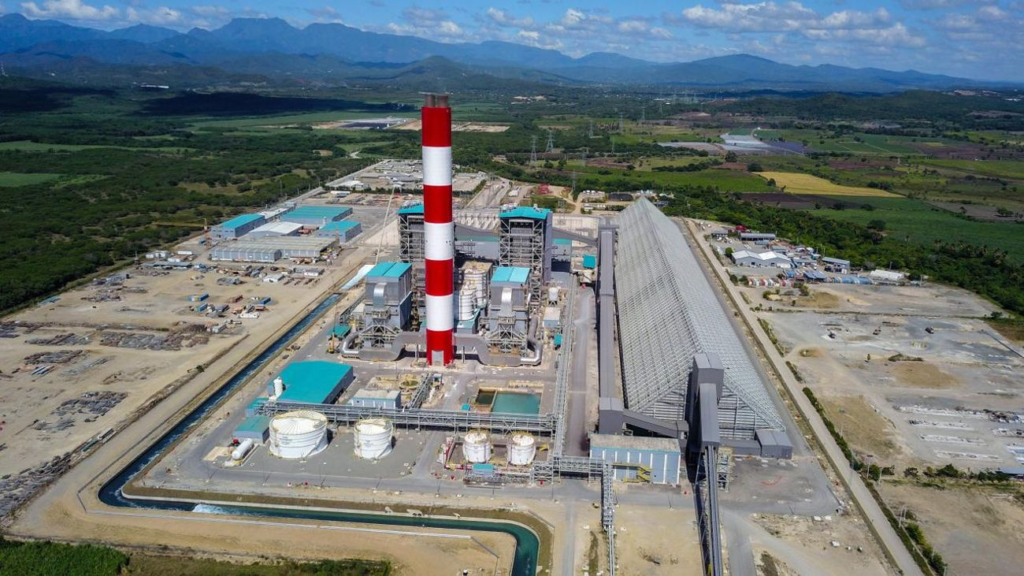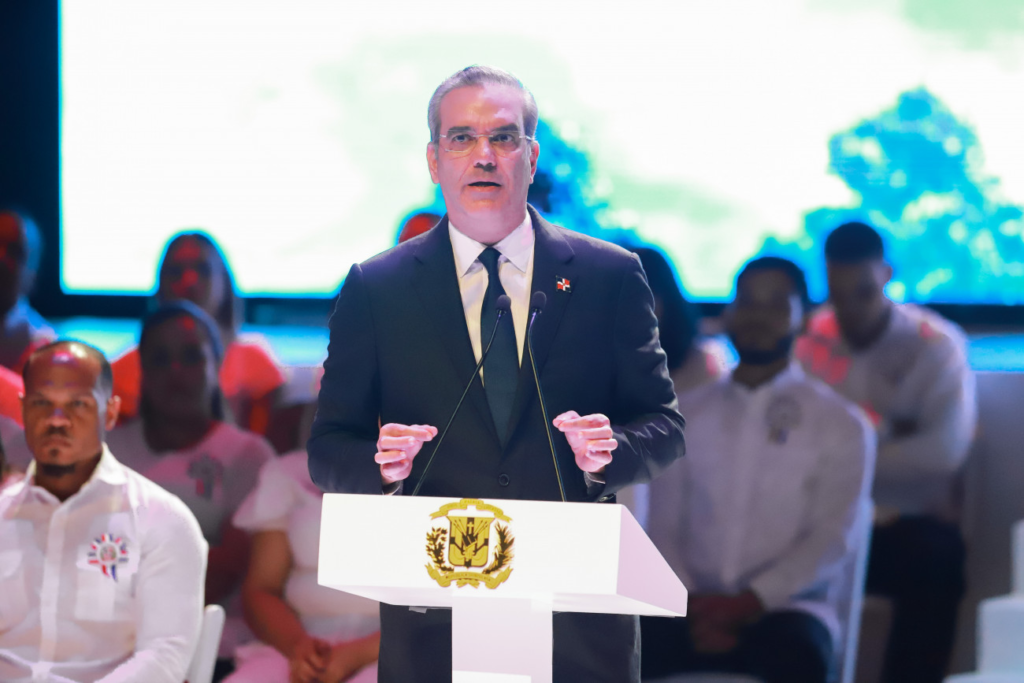

The Dominican Republic still generates most of its electricity from fossil fuels—just over 81% in the month of July—and it is focusing on reducing that dependence, said Rafael Gómez Del Giudice, Deputy Minister of Energy in the Ministry of Energy and Mines.
“Our plan for the country is to promote renewables in general, because that is the only source of primary energy that we don’t have to import, we don’t have to pay a third party for, we don’t have to spend foreign currency on, and it is always available, which is the sun and the wind,” he said in an interview.
Unlike some other Latin American countries, the Dominican Republic does not have major hydro resources. Last month, hydroelectricity accounted for 6.47% of power generation, according to official figures—less than wind, at 7.83%. The remaining renewable generation came from solar power (3.36%) and biomass (1.17%).
The country’s goal is to generate 25% of its electricity from renewable energy by 2025 and 30% by 2030.
Global events in recent months have underscored the importance of renewable energy, Gómez said. First, prices for fossil fuels started to go up about a year ago, as countries began to recover from the pandemic and increase their economic activity. Then came Russia’s invasion of Ukraine, which exacerbated the price spikes. With periodic disruptions of Russian gas to Europe, small countries like the Dominican Republic have suddenly had to compete for natural gas and coal supplies with much bigger economies that are seen as more attractive customers because they purchase much larger quantities.
“That creates uncertainty and energy instability in our country,” Gómez said, adding that at times electricity producers have had to turn to more expensive alternatives such as diesel and fuel oil. Dominican consumers have been shielded from electricity price hikes through subsidies, he said, but the situation has represented “a very heavy burden for the Dominican state.”
The Ministry of Energy and Mines, under the leadership of Minister Antonio Almonte, has been stepping up efforts to encourage the growth of the renewable energy sector in the two years that President Luis Abinader has been in office, Gómez said, and it’s a topic the country will continue to highlight through ECPA.
“We have to promote renewable energy more to move toward carbon neutrality,” he said. Countries around the world have made commitments to reduce greenhouse gas emissions, he stressed, and meeting those targets will require a greater reliance on renewable sources of energy.
This month, the Dominican Republic officially assumed the leadership of the ECPA Steering Committee, taking the helm from Panama, which had led the ECPA initiative for more than two years. Panama hosted the Fifth ECPA Ministerial Meeting in February of this year, and the Dominican Republic has committed to host the next ministerial sometime in 2024.

Representatives from around the region met in February in Panama City for the Fifth ECPA Ministerial Meeting. Credit: Presidency of Panama.
ECPA held its first ministerial meeting in 2010, in the United States. Mexico, Chile, and Jamaica have also hosted these events, which bring together energy ministers and other high-level officials from across the Americas. Between ministerial meetings, the Steering Committee, which includes representatives from nine countries from the region, guides ECPA activities, promotes dialogue, and facilitates regional coordination on energy-related matters.
During the recent meeting of the Steering Committee, Panamanian Deputy Energy Secretary Rosilena Lindo reviewed some of the topics covered at the last ECPA ministerial—including how to ensure universal access to energy and the importance of youth involvement in the energy transition—and expressed her country’s appreciation to the Dominican Republic for taking on the leadership role. Deputy Minister Gómez, for his part, gave an overview of some of the energy challenges his island nation faces.
In the interview for this newsletter, Gómez also mentioned some of the other topics, in addition to renewables, that the Dominican Republic would like to address through ECPA. One of those is green hydrogen—in other words, hydrogen produced from renewable energy. Noting that Chile is one country that has already mapped out a long-term plan for producing and exporting green hydrogen, Gómez added that there might be opportunities for more regional-level collaboration in this area.
Among other possible topics on the table, he said: the potential for micro-nuclear power plants, the feasibility of one day interconnecting the electric grids of some islands in the Caribbean, and opportunities in the region for decarbonization.

At a recent meeting of the ECPA Steering Committee, Panamanian Deputy Energy Secretary Rosilena Lindo (top row, right) handed over the reins of the ECPA process to her counterpart from the Dominican Republic, Rafael Gómez Del Giudice (top row, third from right).
In the case of the Dominican Republic, about one-third of the electricity produced in the country currently comes from the state-owned Punta Catalina coal-fired power plant, whose two units went into operation in 2019 and 2020. Gómez said the previous administration showed a “lack of planning” when it decided to rely on coal for baseload power instead of natural gas.
In June, the Ministry of Energy and Mines announced that it had awarded contracts to two international consortiums for the construction of two combined-cycle gas-fired power plants and a new regasification terminal for liquefied natural gas (LNG).

About one-third of the electricity produced in the Dominican Republic currently comes from the coal-fired Punta Catalina Power Plant.
In the past two years, Gómez said, the government has streamlined the permitting process for solar projects and signed power purchase agreements (PPAs) with 13 companies for a combined 620-megawatt peak output. He added that plans are underway to amend the country’s energy regulations so that larger renewable projects can be awarded through an auction system, which would enable faster progress on renewables.
Most electricity in the Dominican Republic is now generated by private companies, Gómez said, though the state still handles distribution. The current government is working to modernize the national electricity system and make it run more efficiently, he said.
“We understand that the business of the Dominican state is not to generate or commercialize energy. That’s what the private companies are for,” he said. “The state’s business is to create the norms, create the laws, create the regulations, and standardize the business so that it is profitable for those doing it but that it is also beneficial to the consumers.”

On August 16, in a speech to mark his first two years in office, President Abinader pointed to his government’s expansion of renewable energy and the steps it had taken to shore up the country’s electric grid. In a few years, he said, the country will have an additional 2,000 megawatts of firm power on top of its additional renewable capacity.
“We are on a path to become a true regional powerhouse in terms of modern and diversified electricity generation,” he said. “This is change.”
 View Map
View Map